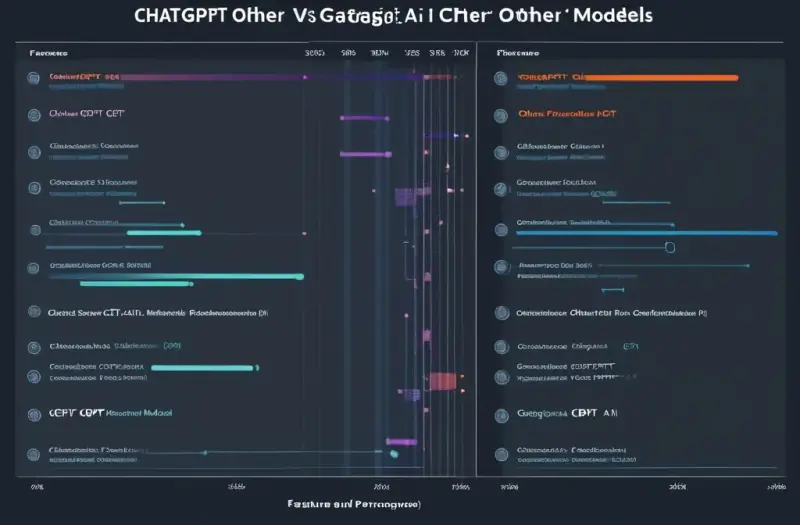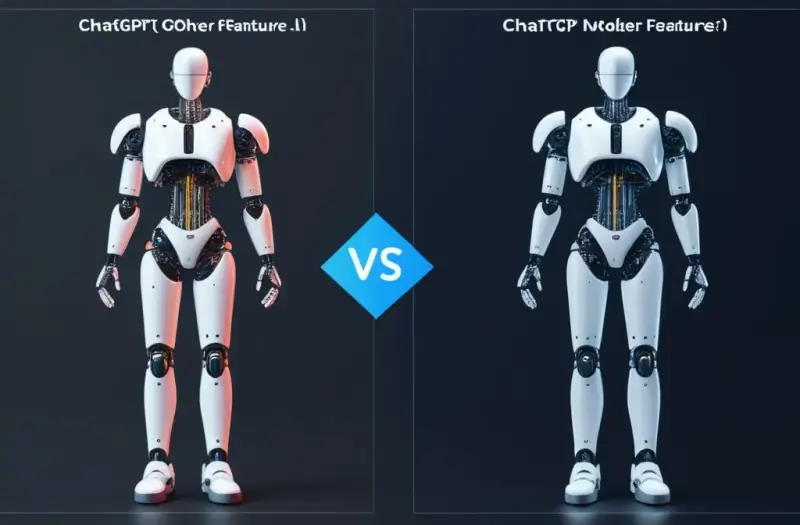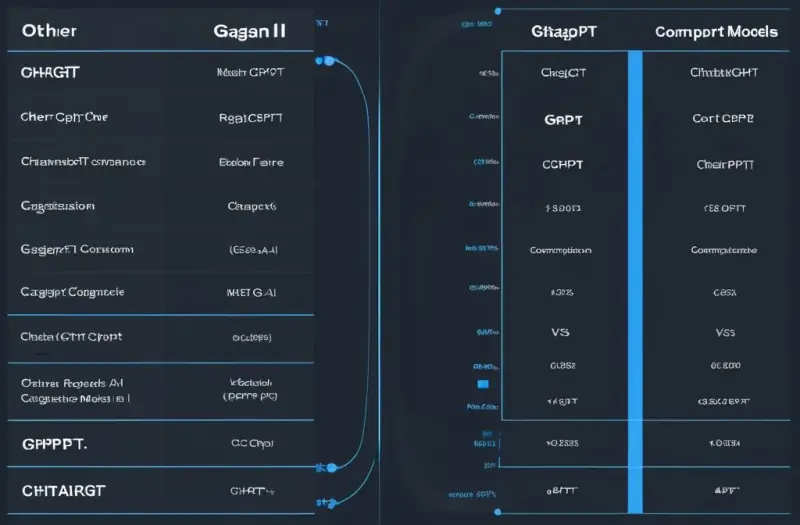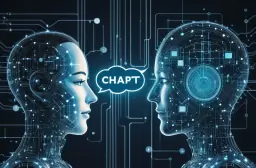ChatGPT vs. Other AI Models: Which is Best for You?

Table of Contents
As artificial intelligence continues to evolve, the competition between AI models has become fierce. Today, we’re going to take a deep dive into the features and performance of ChatGPT and other AI models, providing a comprehensive comparison that helps answer one important question: Which AI model offers the best experience?
Introduction
When it comes to natural language processing (NLP), there are numerous AI models available, each with its strengths and limitations. Among the most popular is ChatGPT, a cutting-edge tool developed by OpenAI that has made significant strides in AI-assisted conversations. However, ChatGPT isn’t the only player in the field. Other competitors, like Google Bard, Microsoft Copilot, and Anthropic Claude, bring different features to the table, giving users a wide range of options depending on their needs.
In this article, we’ll explore the key differences between ChatGPT and its competitors, focusing on areas such as performance, usability, and features. Whether you’re looking for the best tool for creative writing, customer service, or general problem-solving, this comprehensive guide will help you make an informed decision.
ChatGPT vs. GPT-4: Unpacking the Generative AI Powerhouse

Let’s begin by comparing ChatGPT with its sibling, GPT-4. OpenAI’s ChatGPT is essentially a conversational variant of GPT-4, designed for real-time dialogue and interaction. While both models share the same underlying large language model (LLM) architecture, ChatGPT has been fine-tuned for human-like conversations.
Key Differences Between ChatGPT and GPT-4
- Conversational optimization: While GPT-4 excels in broad text generation tasks, ChatGPT is fine-tuned to engage in more natural, context-aware dialogues.
- Usability: ChatGPT is easier to use in everyday applications, whereas GPT-4 might require more technical knowledge to deploy effectively.
- Speed vs. Depth: ChatGPT is generally faster when responding to conversational prompts, but GPT-4 can generate more nuanced, in-depth responses when performing complex tasks.
In short, if your main goal is to have smooth, natural conversations with an AI, ChatGPT is likely the better option.
ChatGPT vs. Google Bard: The Battle of AI Chatbots
Next, let’s compare ChatGPT with Google Bard, another popular AI assistant. Google Bard is designed to provide real-time, on-the-fly responses with access to up-to-date information from the web.
How ChatGPT Stacks Up Against Google Bard
- Data Availability: Google Bard has the advantage of live access to the internet, allowing it to provide real-time information. In contrast, ChatGPT relies on a pre-trained dataset that is periodically updated.
- Accuracy: ChatGPT tends to excel in generating more structured and grammatically correct responses. However, Google Bard’s real-time capability gives it an edge in providing the latest information.
- Use Cases: Google Bard may be better suited for tasks that require current data (like answering questions about news or events), while ChatGPT is ideal for creative tasks, such as content creation or problem-solving.
Despite Google Bard’s live internet access, ChatGPT continues to be a favorite due to its coherence and fluency in extended dialogues.
ChatGPT vs. Microsoft Copilot: AI-Assisted Productivity
Microsoft Copilot is another big player in the AI conversation engine space, specifically targeting productivity tools such as Microsoft Office. So, how does ChatGPT measure up?
AI Features for Work Productivity
- Application Integration: Microsoft Copilot is integrated into Microsoft Office Suite, meaning it can assist users directly in applications like Word, Excel, and Outlook. ChatGPT, on the other hand, is more general-purpose and can be adapted for various tasks, though not specifically embedded into productivity tools.
- Task Specialization: Microsoft Copilot specializes in generating content or automating tasks within a specific workflow, while ChatGPT shines in a wider range of conversational tasks, providing flexibility across industries.
- Accuracy and Context: For enterprise-level tasks like document creation or data analysis, Copilot’s context-aware capabilities within Microsoft Office may offer more specialized benefits. However, ChatGPT remains a solid competitor due to its superior ability to handle creative prompts and conversational inputs.
For users focused on workplace productivity, Microsoft Copilot may offer a more streamlined experience, but ChatGPT remains a versatile tool across diverse applications.
ChatGPT vs. Open-Source Models: Flexibility vs. Control

One of the most common comparisons involves ChatGPT and various open-source AI models such as GPT-Neo or BLOOM. While ChatGPT is a proprietary model developed by OpenAI, open-source models provide greater customization and control for developers.
Pros and Cons of Open-Source AI Models
- Flexibility: Open-source models allow for greater flexibility in customization. Developers can fine-tune models like GPT-Neo to fit specific tasks, whereas ChatGPT is more of a “plug-and-play” solution.
- Performance: In terms of performance, ChatGPT often surpasses open-source alternatives in handling complex dialogues due to its extensive training on diverse datasets.
- Cost: Open-source models are often free or available at lower costs, making them appealing to developers with specific technical needs. However, the time and effort required to train and fine-tune these models can outweigh their financial benefits.
For developers who want more control over their AI assistants, open-source models might be the way to go. But for users looking for an out-of-the-box solution, ChatGPT offers unmatched ease of use and performance.
ChatGPT vs. Anthropic Claude: A Look at Ethical AI
Anthropic Claude is a model designed with a strong emphasis on ethics and safety. This makes it a compelling alternative for those concerned about the ethical implications of using AI.
ChatGPT’s Ethical Considerations vs. Claude
- Ethical Guidelines: Anthropic Claude is built with rigorous ethical frameworks, designed to minimize harmful outputs. ChatGPT, while also ethically grounded, has occasionally faced criticism for its generated content.
- Content Moderation: Claude places greater emphasis on safe and responsible AI, often providing more cautious or filtered responses. ChatGPT is more flexible but may require careful monitoring in certain contexts.
- Use Cases: For industries requiring stringent ethical oversight (such as healthcare or education), Claude may be a safer choice. But for general or creative purposes, ChatGPT offers more freedom and less restrictive responses.
Both models aim to uphold ethical standards, but ChatGPT strikes a balance between safety and creative freedom, making it an excellent tool for a broader range of applications.
FAQs
What makes ChatGPT stand out from other AI models?
ChatGPT is specifically optimized for conversational use, making it more natural and engaging for human interactions compared to many competitors.
Can Google Bard access real-time data?
Yes, Google Bard can pull in real-time information from the internet, something that ChatGPT currently lacks due to its periodic training on large datasets.
Is Microsoft Copilot better for workplace productivity than ChatGPT?
For specialized tasks within Microsoft Office, Copilot may offer more tailored solutions. However, ChatGPT excels in versatility and broader applications.
Are open-source models better than ChatGPT?
Open-source models offer more control and flexibility but generally require more expertise and resources to deploy effectively. ChatGPT is a user-friendly, powerful alternative for those needing immediate solutions.
What are the ethical concerns surrounding ChatGPT vs. Claude?
Anthropic Claude is designed with stringent ethical guidelines, making it a safer option for industries needing strong content moderation. ChatGPT offers more flexibility but requires ethical considerations based on the user’s needs.
Conclusion
In comparing ChatGPT with its competitors, we’ve seen that each model has its own strengths. ChatGPT stands out for its ease of use and versatility, making it a popular choice for users across multiple industries. Google Bard offers real-time access to information, while Microsoft Copilot excels in workplace productivity. For developers, open-source models provide unparalleled customization, and Anthropic Claude offers ethical and safety-first features.
At the end of the day, the right AI model depends on your specific use case. Whether you prioritize conversational fluency, productivity, ethical considerations, or flexibility, there’s an AI solution tailored to meet your needs.
Key Takeaways
- ChatGPT is optimized for natural conversations, making it a user-friendly tool for diverse applications.
- Google Bard offers the advantage of real-time data access but lacks the conversational polish of ChatGPT.
- Microsoft Copilot excels in workplace productivity by being embedded into Microsoft Office tools.
- Open-source models offer greater customization but require more technical expertise.
- Anthropic Claude focuses on ethical and safe AI, making it suitable for industries needing high content moderation.
Popular Tags
ADS SPACE HERE


